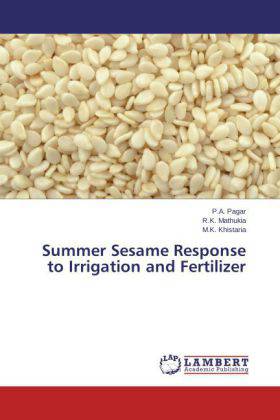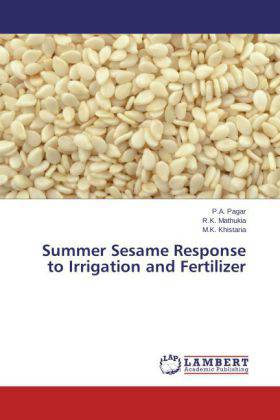
- Afhalen na 1 uur in een winkel met voorraad
- Gratis thuislevering in België vanaf € 30
- Ruim aanbod met 7 miljoen producten
- Afhalen na 1 uur in een winkel met voorraad
- Gratis thuislevering in België vanaf € 30
- Ruim aanbod met 7 miljoen producten
Zoeken
Summer Sesame Response to Irrigation and Fertilizer
P. A. Pagar, R. K. Mathukia, M. K. Khistaria
Paperback | Engels
€ 68,45
+ 136 punten
Omschrijving
Sesame (Sesamum indicum L.) is one of the most important edible oilseed crops grown extensively in India. India is still the world leader with the maximum production (25.8%) from the largest area (29.3%) and highest export (40%) of sesame in the world. Fertilizers, even though, comparatively, costly input of production is essential for securing higher yields. The contribution of fertilizer in increasing agricultural production has been very well demonstrated in India and elsewhere. Water management stands second, next to fertilizer in augmenting the crop yield. For efficient utilization of irrigation water, it is necessary to find out appropriate approach for scheduling irrigation. Thus, arriving at an optimum combination of the fertilizer use and irrigation is expected to result in economics of water use, simultaneously increasing the production of the crop. In view of the paucity of adequate experiment data on various aspects of crop management listed above relating to sesame, the present experiment was undertaken.
Specificaties
Betrokkenen
- Auteur(s):
- Uitgeverij:
Inhoud
- Aantal bladzijden:
- 116
- Taal:
- Engels
Eigenschappen
- Productcode (EAN):
- 9783659529344
- Verschijningsdatum:
- 3/04/2014
- Uitvoering:
- Paperback
- Afmetingen:
- 150 mm x 220 mm
- Gewicht:
- 181 g

Alleen bij Standaard Boekhandel
+ 136 punten op je klantenkaart van Standaard Boekhandel
Beoordelingen
We publiceren alleen reviews die voldoen aan de voorwaarden voor reviews. Bekijk onze voorwaarden voor reviews.








